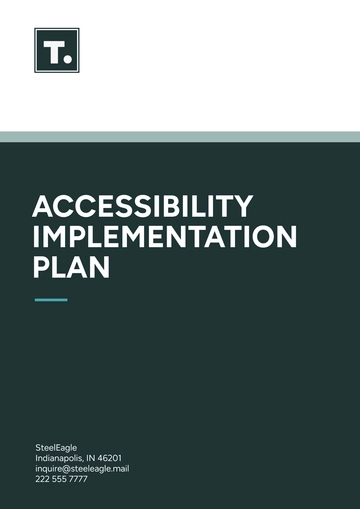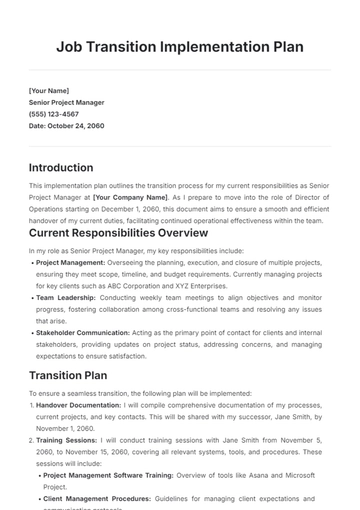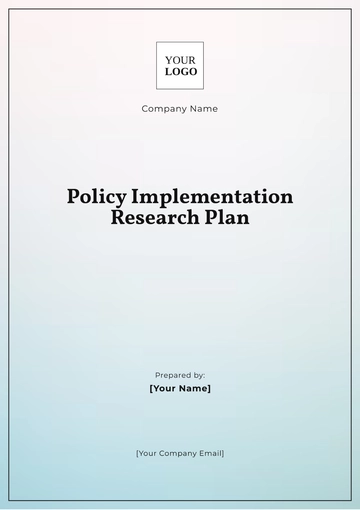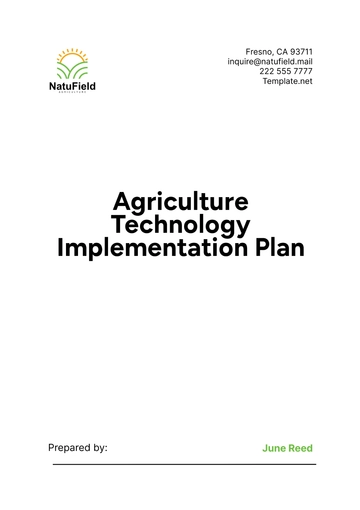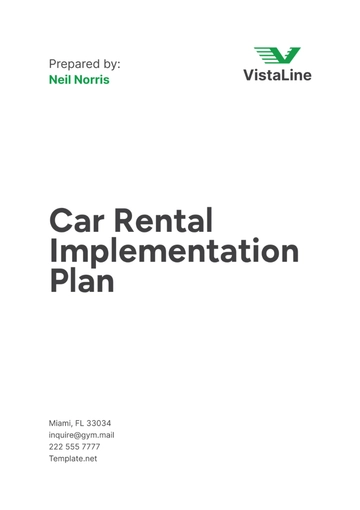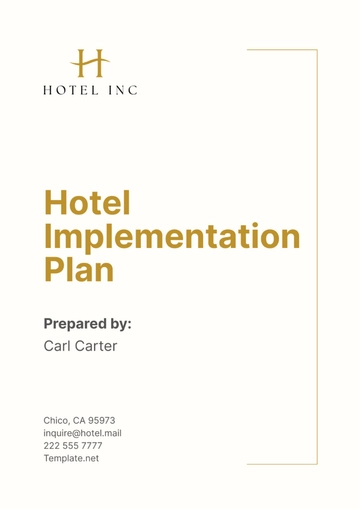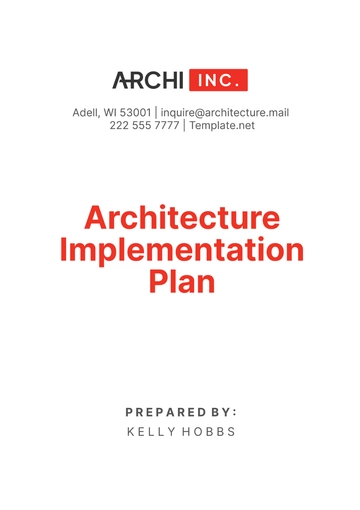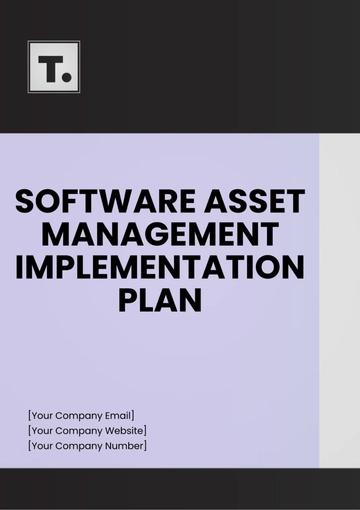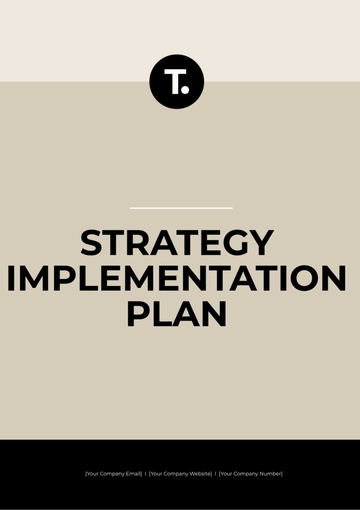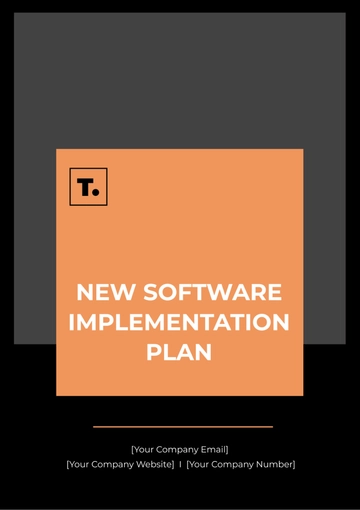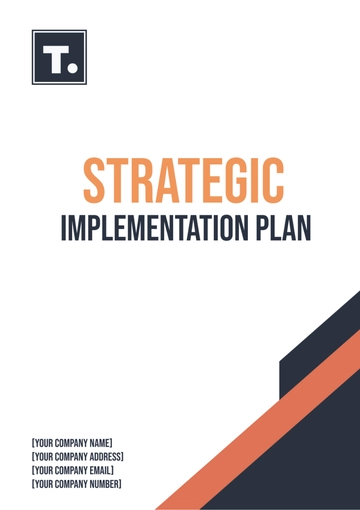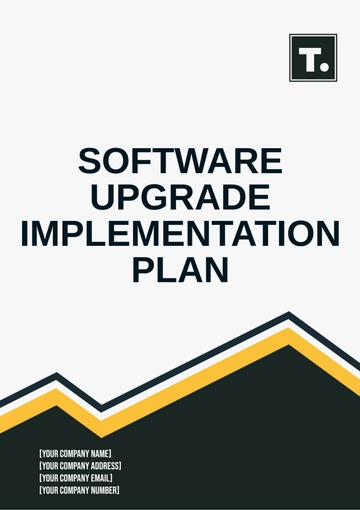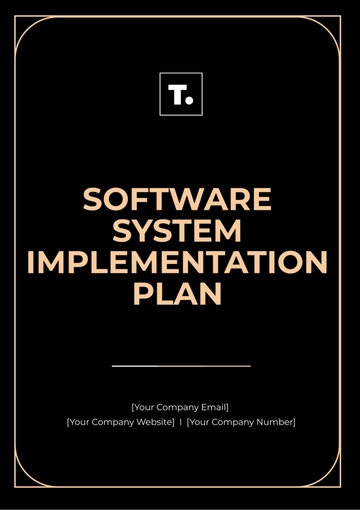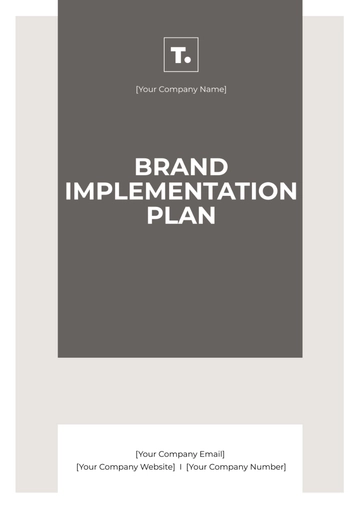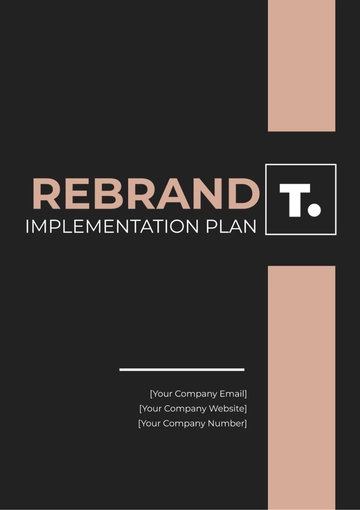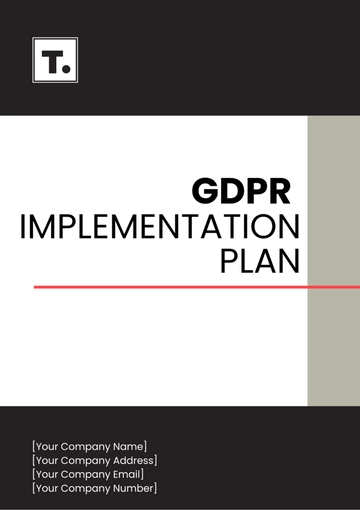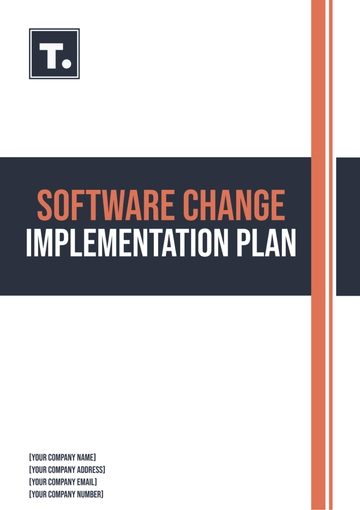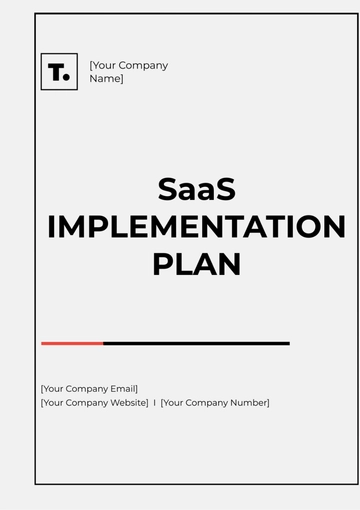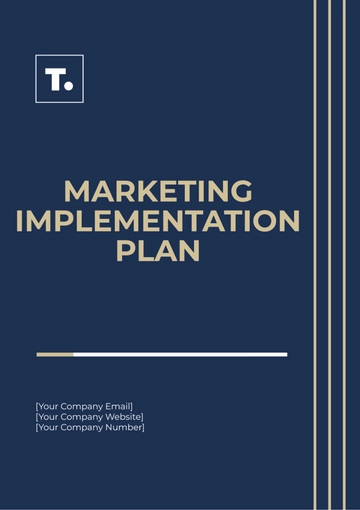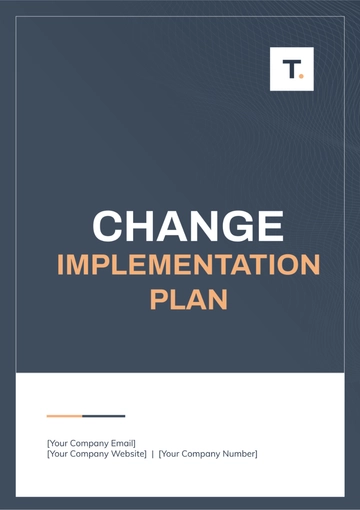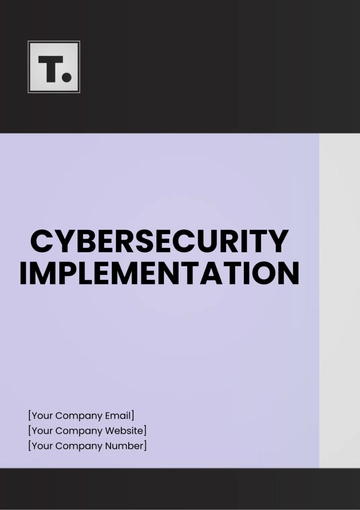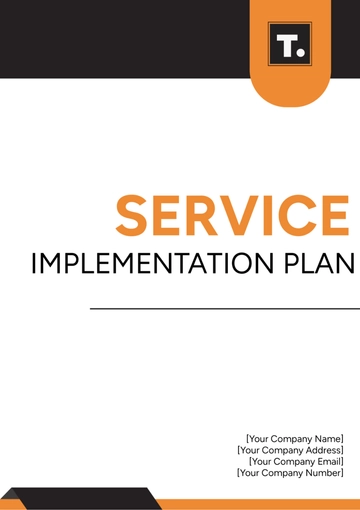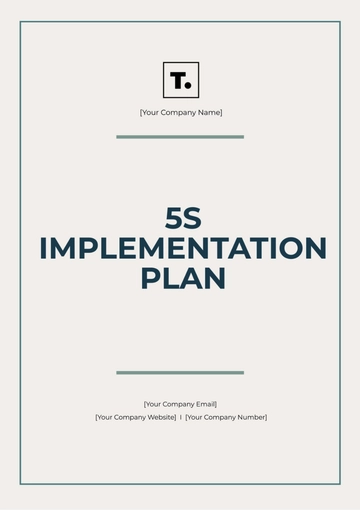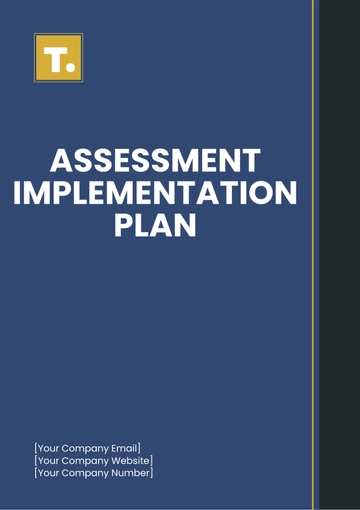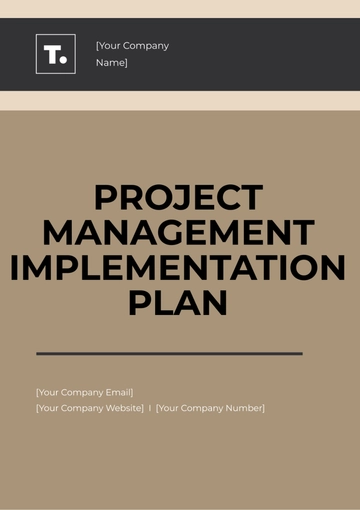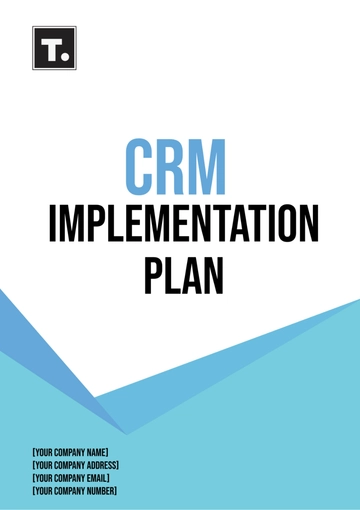Free Car Rental Implementation Plan
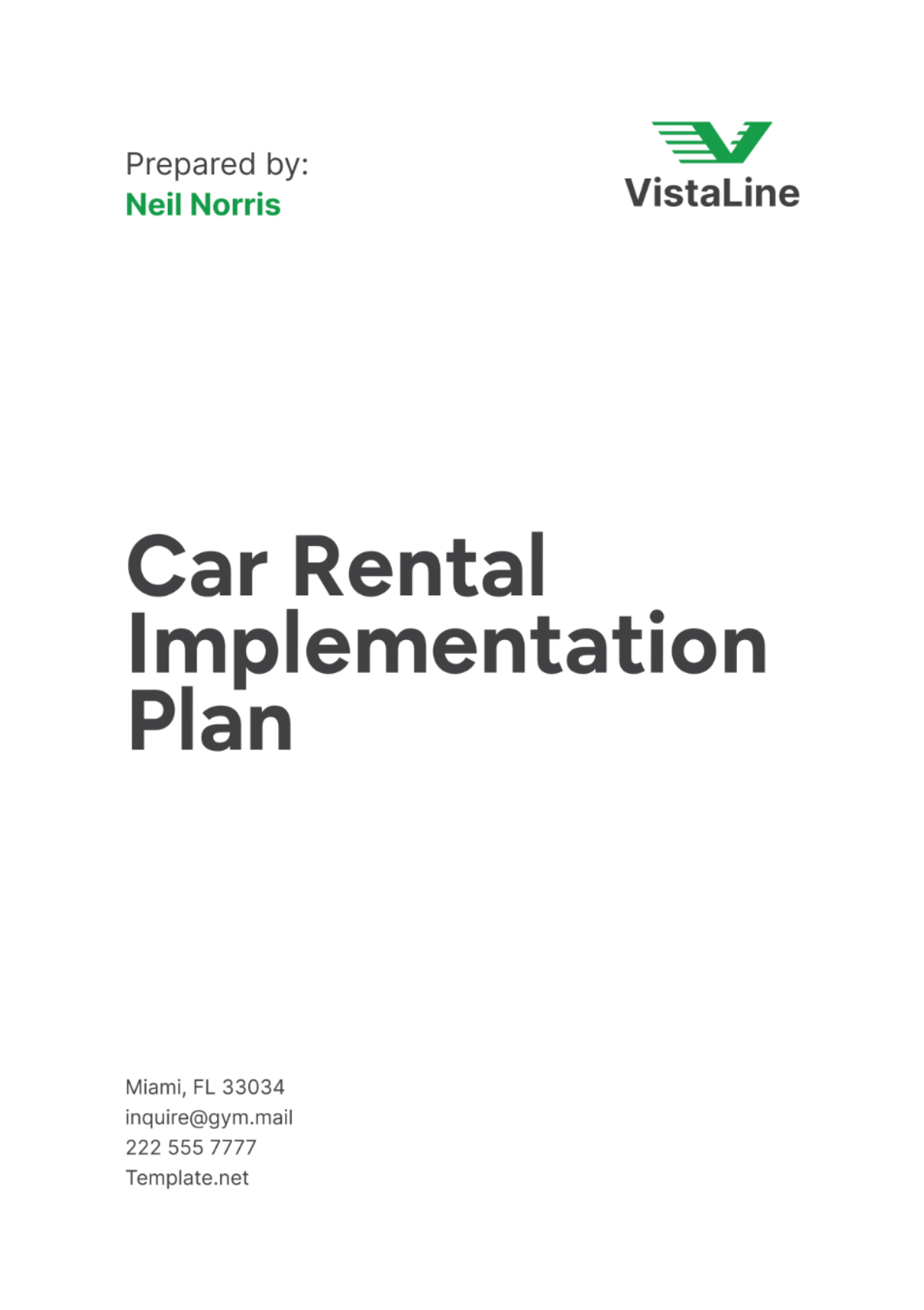
I. Introduction
A. Overview of the Car Rental Service
Our car rental service aims to cater to diverse customer needs with a fleet that includes economy, mid-size, SUVs, luxury vehicles, and vans, ensuring we meet both local demand and the preferences of international travelers. We prioritize convenience by offering flexible rental durations, airport pick-up/drop-off options, and 24/7 customer support to enhance the overall rental experience.
B. Purpose and Objectives of the Implementation Plan
The primary objective of this Implementation Plan is to establish [Your Company Name] as a leading provider of reliable and customer-centric car rental solutions in [City]. We aim to achieve a market penetration rate of [0]% within the first year and sustain an average customer satisfaction rating of 4.5/5 through superior service delivery and operational excellence.
C. Scope and Key Stakeholders
This plan covers every facet of operations, beginning with the initial setup and the distribution of resources. It extends to include the formulation and execution of marketing strategies, as well as the continuous evaluation of performance metrics. An integral part of this comprehensive plan involves key stakeholders. These stakeholders consist of senior management, who are responsible for steering the strategic direction of the project. Additionally, operational teams play a crucial role by handling the implementation of daily activities. External partners are also a vital component, contributing to the plan by ensuring that all legal requirements are met and that the market is adequately prepared.
II. Pre-Implementation Phase
A. Assessment and Planning
Market Research and Analysis
Our comprehensive market research indicates a growing trend towards rental services among millennials and business travelers, driven by increased urbanization and a preference for flexible mobility solutions. Competitor analysis highlights opportunities to differentiate through personalized customer service and a wider range of vehicle options, including eco-friendly models to appeal to environmentally conscious consumers.
SWOT Analysis
Strengths: Strong brand recognition in the local market, strategic location near major transport hubs, and a dedicated team with extensive experience in the automotive and hospitality sectors.
Weaknesses: Initial capital investment for fleet acquisition and facility setup, reliance on seasonal tourism fluctuations affecting rental demand.
Opportunities: Expansion into neighboring regions with high tourist influx, leveraging technology for enhanced customer engagement and operational efficiency.
Threats: Intense competition from established rental brands and economic uncertainties impacting travel and leisure expenditures.
B. Legal and Regulatory Compliance
Licensing Requirements
We are in the process of obtaining the necessary permits and licenses from local authorities to operate a car rental business in compliance with regulatory standards. This includes licenses for vehicle rental operations, business permits for our facility, and certifications for staff handling customer transactions.
Insurance Coverage
To mitigate risks associated with vehicle damage, accidents, and liability, we are securing comprehensive insurance coverage that includes third-party liability, collision damage waiver (CDW), and theft protection. Additionally, we are exploring insurance options for our fleet to ensure adequate coverage and minimize financial risks.
Safety and Environmental Regulations
Adhering to stringent safety and environmental regulations is paramount. We are implementing regular vehicle inspections, maintenance checks, and emission testing to meet environmental standards. Our commitment to safety extends to training staff on emergency procedures and ensuring all vehicles are equipped with safety features such as airbags and anti-lock braking systems (ABS).
III. Resource Planning
A. Financial Resources
Budget Allocation
Allocating approximately $[0] for initial setup costs, including facility lease, renovation, and equipment acquisition. A significant portion of the budget is allocated towards fleet acquisition to ensure a diverse range of vehicles that cater to varying customer preferences and needs.
Financial Projections and ROI Analysis
Based on market research and projected demand, we anticipate achieving breakeven within the first eight months of operation, with a targeted return on investment (ROI) of [0]% by the end of year one. Continuous financial monitoring and adjustment of budgetary allocations will be conducted to optimize operational efficiency and maximize profitability.
B. Human Resources
Staffing Requirements
We are recruiting a skilled workforce including customer service representatives, mechanics, fleet managers, and administrative staff. Each role is crucial in ensuring seamless operations and delivering exceptional service standards. Recruitment efforts focus on individuals with industry experience and a commitment to customer satisfaction.
Training and Development Plan
Implementing a comprehensive training program to equip our staff with the necessary skills and knowledge. Training modules cover customer service excellence, vehicle handling and maintenance, safety protocols, and proficiency in using rental management software. Ongoing professional development initiatives ensure staff remain abreast of industry trends and maintain high service standards.
IV. Operational Setup
A. Facilities and Infrastructure
Location Selection and Setup
Our strategic location near [Transportation Hub] ensures convenient access for both local residents and travelers. The facility will be equipped with modern amenities including a customer service center, vehicle inspection bays, and ample parking space to accommodate our growing fleet. Renovations are underway to create a welcoming environment that reflects our brand's commitment to quality and reliability.
Equipment and Technology Requirements
Investing in state-of-the-art rental management software will streamline booking processes and inventory management, allowing real-time updates on vehicle availability and customer reservations. Additionally, GPS tracking systems will be integrated into each vehicle to monitor fleet movements, optimize routes, and ensure efficient vehicle allocation. These technological advancements are designed to enhance operational efficiency and provide a seamless rental experience for our customers.
B. Fleet Management
Vehicle Procurement and Maintenance
Our fleet procurement strategy focuses on acquiring a diverse range of vehicles, including fuel-efficient models, hybrid options, and luxury vehicles to cater to varying customer preferences. Vehicles will undergo rigorous maintenance checks and scheduled servicing to uphold safety standards and minimize downtime. Partnerships with reputable automotive suppliers ensure high-quality vehicles equipped with modern amenities and safety features.
GPS Tracking and Fleet Management Systems
Implementing GPS tracking systems will enable real-time monitoring of vehicle locations, speed, and maintenance needs, ensuring optimal fleet utilization and enhancing overall operational efficiency. Fleet management software will provide comprehensive insights into vehicle performance, maintenance histories, and driver behaviors, allowing us to proactively address any issues and maintain fleet reliability.
V. Marketing and Promotion
A. Branding Strategy
Brand Identity and Positioning
Our brand identity emphasizes reliability, affordability, and exceptional customer service, positioning us as a trusted choice in the competitive car rental market. We aim to build strong brand recognition through consistent messaging that highlights our commitment to quality vehicles, transparent pricing, and personalized customer care. By aligning our brand values with customer expectations, we seek to foster long-term relationships and drive customer loyalty.
Marketing Collaterals
A user-friendly website will serve as our primary platform for customer engagement, featuring intuitive navigation, detailed vehicle descriptions, and secure online booking capabilities. Additionally, printed materials such as brochures, flyers, and promotional offers will be distributed at key locations and events to increase brand visibility and attract potential customers. These collaterals will showcase our service offerings and highlight the unique benefits of choosing our car rental service.
B. Promotion Strategies
Advertising and Promotion Campaigns
Our advertising strategy includes targeted campaigns across digital channels, including social media platforms, search engines, and travel-related websites. Special promotions, discounts for early bookings, and referral incentives will be offered to attract new customers and encourage repeat business. Collaborations with travel influencers and partnerships with local businesses will further expand our reach and attract a diverse customer base.
Partnerships and Sponsorships
Forming strategic partnerships with hotels, airlines, and corporate clients will enable cross-promotional opportunities and package deals that enhance our market presence. Sponsorships of community events and local initiatives align with our commitment to community engagement and brand building. By leveraging these partnerships, we aim to increase brand visibility, drive bookings, and position ourselves as a preferred choice for car rentals in the region.
VI. Customer Service and Experience
A. Service Standards
Customer Interaction Guidelines
Our customer service approach prioritizes professionalism, responsiveness, and personalized assistance to meet the unique needs of each customer. Staff are trained to handle inquiries efficiently, provide accurate information on vehicle options and rental terms, and resolve issues promptly to ensure a positive rental experience. Regular feedback loops and customer surveys will be utilized to continually improve service delivery and address any areas for enhancement.
Complaint Handling Procedures
Clear procedures are in place for managing customer complaints, ensuring timely resolution and maintaining customer satisfaction. Complaints are documented, investigated thoroughly, and escalated as necessary to achieve satisfactory outcomes for our customers. Proactive communication and empathy are core principles guiding our approach to complaint resolution, reinforcing our commitment to exceeding customer expectations and fostering long-term loyalty.
B. Reservation and Booking Systems
Online Booking Platform Implementation
Our user-friendly website and mobile app allow customers to browse available vehicles, compare prices, and make secure bookings with ease. Integration of a robust reservation management system ensures real-time updates on vehicle availability, simplifies booking modifications, and facilitates seamless transactions. Automated confirmation emails and reminders enhance communication and provide customers with peace of mind throughout their rental experience.
Reservation Management Protocols
Standardized protocols for reservation management include verification of customer details, confirmation of rental terms, and provision of rental agreements outlining responsibilities and conditions. Staff are trained to handle reservation inquiries efficiently, address customer preferences, and ensure accurate documentation to facilitate smooth vehicle handovers. By maintaining transparency and reliability in our reservation process, we aim to build trust and deliver exceptional service at every touchpoint.
VII. Technology Integration
A. Rental Management Software
Selection and Implementation
Our selection process for rental management software focused on finding a solution that integrates seamlessly with our operational needs, including booking management, fleet tracking, and customer relationship management (CRM). After thorough evaluation, we have chosen [Software Name] for its robust features, scalability, and user-friendly interface. Implementation will involve customization to align with our specific workflows and staff training to ensure proficient utilization.
Integration with Other Systems (Payment, CRM)
Integrating our rental management software with payment gateways and CRM systems will streamline transaction processing and customer data management. This integration aims to enhance operational efficiency, reduce administrative overhead, and provide a unified platform for managing customer interactions and service requests. By leveraging technology, we seek to improve service delivery and customer satisfaction while optimizing internal processes.
B. Mobile Apps and Digital Services
Development and Launch
Developing a mobile app will offer customers convenient access to our services, allowing them to browse vehicles, make reservations, and manage bookings from their smartphones. The app will feature a user-friendly interface, real-time updates on vehicle availability, and secure payment options to facilitate seamless transactions. Launching the app will expand our digital footprint and cater to the preferences of tech-savvy travelers seeking on-the-go convenience.
Customer Engagement Features
The mobile app will include customer engagement features such as push notifications for special offers, personalized recommendations based on past rentals, and loyalty program integration to incentivize repeat bookings. By fostering direct communication with customers, we aim to strengthen brand loyalty, increase booking frequency, and enhance overall customer satisfaction. Continuous updates and enhancements to the app will ensure it remains a valuable tool for enhancing the rental experience.
VIII. Quality Control and Risk Management
A. Quality Assurance Measures
Vehicle Inspection and Maintenance Schedules
Implementing rigorous vehicle inspection protocols ensures all rental vehicles meet safety standards and are in optimal condition for customer use. Regular maintenance schedules are established to address preventive maintenance, oil changes, tire rotations, and other essential services. Comprehensive inspection checklists and maintenance logs are maintained to track vehicle histories and compliance with manufacturer guidelines.
Service Performance Metrics
Monitoring service performance metrics such as vehicle downtime, customer satisfaction ratings, and maintenance costs allows us to identify areas for improvement and maintain high service standards. Key performance indicators (KPIs) are regularly reviewed to assess operational efficiency, optimize resource allocation, and drive continuous improvement initiatives. By analyzing data trends and customer feedback, we can proactively address issues and enhance overall service delivery.
B. Risk Assessment and Mitigation
Risk Identification (Vehicle Damage, Accidents)
Conducting thorough risk assessments identifies potential hazards such as vehicle damage, accidents, and liability issues. Risk mitigation strategies include comprehensive insurance coverage, driver safety training programs, and adherence to legal regulations. Contingency plans are developed to address unforeseen events and minimize disruptions to service delivery, ensuring business continuity and customer satisfaction.
Contingency Plans and Insurance Coverage
Securing adequate insurance coverage for our fleet, including liability insurance, collision damage waiver (CDW), and theft protection, mitigates financial risks associated with accidents and vehicle damage. Emergency response protocols and contingency plans outline procedures for handling incidents, ensuring prompt resolution and minimizing impact on customers. By prioritizing risk management, we safeguard our assets, protect customer interests, and uphold our commitment to safety and reliability.
IX. Monitoring and Evaluation
A. Key Performance Indicators (KPIs)
Metrics for Success Measurement
Key performance indicators (KPIs) such as rental utilization rates, average rental duration, and customer retention rates are monitored to gauge business performance. Financial metrics including revenue per vehicle and return on investment (ROI) provide insights into profitability and operational efficiency. These KPIs are tracked regularly to assess progress towards goals and inform strategic decisions aimed at driving sustainable growth.
Regular Performance Reviews
Conducting regular performance reviews allows us to evaluate the effectiveness of strategies implemented in the Implementation Plan. Performance metrics are compared against benchmarks and industry standards to identify strengths, weaknesses, and opportunities for improvement. Actionable insights gained from performance reviews guide adjustments to operational processes, marketing campaigns, and customer service initiatives to optimize outcomes and enhance competitive advantage.
B. Feedback and Continuous Improvement
Customer Feedback Mechanisms
Implementing customer feedback mechanisms, such as surveys, reviews, and direct feedback channels, solicits insights into customer experiences and satisfaction levels. Feedback is analyzed to identify areas for service enhancement, address customer concerns, and capitalize on positive feedback to reinforce strengths. By fostering an open dialogue with customers, we demonstrate responsiveness to their needs and aspirations, driving continuous improvement and fostering long-term relationships.
Implementing Feedback for Service Enhancement
Action plans are developed based on customer feedback to implement improvements in service delivery, operational efficiency, and customer engagement. Cross-functional teams collaborate to prioritize and address feedback-driven initiatives, ensuring swift implementation and measurable impact. Continuous monitoring of feedback trends and performance metrics enables iterative improvements that align with customer expectations and enhance overall service quality.
X. Implementation Timeline
A. Phased Implementation Plan
Milestones and Deliverables
The implementation timeline is divided into phases with specific milestones and deliverables outlined to track progress and ensure timely execution. Key milestones include facility setup, fleet acquisition, software integration, and launch of marketing campaigns. Each phase is carefully planned to mitigate risks, allocate resources efficiently, and maintain momentum towards achieving project goals.
Timeline for Each Phase
Phase 1 focuses on regulatory compliance and facility preparation, targeting completion within [Timeframe]. Phase 2 encompasses fleet procurement and setup of operational systems, scheduled for [Timeline]. Phase 3 involves marketing launch and customer acquisition strategies, culminating in the official launch of services by [Date]. Regular reviews and adjustments to the timeline ensure alignment with business objectives and market dynamics throughout the implementation process.
B. Coordination and Communication
Team Roles and Responsibilities
Clear roles and responsibilities are assigned to cross-functional teams involved in each phase of the implementation plan. Team members collaborate closely to achieve milestones, address challenges, and capitalize on opportunities for synergy. Regular communication channels facilitate transparency, alignment of goals, and timely resolution of issues, ensuring cohesive efforts towards successful implementation.
Stakeholder Communication Plan
A stakeholder communication plan outlines regular updates and progress reports to senior management, investors, and external partners. Transparent communication ensures stakeholders are informed of key milestones, challenges, and achievements throughout the implementation journey. Feedback from stakeholders is incorporated into decision-making processes, fostering trust, and ensuring alignment with strategic objectives.
XI. Conclusion
A. Summary of Implementation Goals
In summary, the Implementation Plan aims to establish [Your Company Name] as a leading provider of reliable and customer-centric car rental services in [City]. By focusing on operational excellence, technological innovation, and customer satisfaction, we are poised to capitalize on market opportunities and achieve sustainable growth in the competitive car rental industry.
B. Future Growth and Expansion Strategies
Looking ahead, future growth strategies include expanding our fleet offerings, exploring new market segments, and enhancing digital capabilities to meet evolving customer expectations. Strategic partnerships, continuous service improvements, and proactive market strategies will drive expansion into adjacent markets and solidify our position as a preferred choice for car rentals.
C. Closing Remarks and Acknowledgments
We extend our sincere appreciation to our dedicated team, stakeholders, and customers for their support and collaboration in bringing this Implementation Plan to fruition. Together, we are committed to delivering exceptional service, driving innovation, and exceeding expectations in every aspect of our operations.
- 100% Customizable, free editor
- Access 1 Million+ Templates, photo’s & graphics
- Download or share as a template
- Click and replace photos, graphics, text, backgrounds
- Resize, crop, AI write & more
- Access advanced editor
Manage your car rental startup with ease using the Car Rental Implementation Plan Template from Template.net. This editable and customizable template includes a user-friendly AI Editor Tool, ensuring you can tailor every detail to fit your business needs. Streamline operations, enhance customer service, and achieve success with a comprehensive roadmap designed for efficiency and growth.
You may also like
- Finance Plan
- Construction Plan
- Sales Plan
- Development Plan
- Career Plan
- Budget Plan
- HR Plan
- Education Plan
- Transition Plan
- Work Plan
- Training Plan
- Communication Plan
- Operation Plan
- Health And Safety Plan
- Strategy Plan
- Professional Development Plan
- Advertising Plan
- Risk Management Plan
- Restaurant Plan
- School Plan
- Nursing Home Patient Care Plan
- Nursing Care Plan
- Plan Event
- Startup Plan
- Social Media Plan
- Staffing Plan
- Annual Plan
- Content Plan
- Payment Plan
- Implementation Plan
- Hotel Plan
- Workout Plan
- Accounting Plan
- Campaign Plan
- Essay Plan
- 30 60 90 Day Plan
- Research Plan
- Recruitment Plan
- 90 Day Plan
- Quarterly Plan
- Emergency Plan
- 5 Year Plan
- Gym Plan
- Personal Plan
- IT and Software Plan
- Treatment Plan
- Real Estate Plan
- Law Firm Plan
- Healthcare Plan
- Improvement Plan
- Media Plan
- 5 Year Business Plan
- Learning Plan
- Marketing Campaign Plan
- Travel Agency Plan
- Cleaning Services Plan
- Interior Design Plan
- Performance Plan
- PR Plan
- Birth Plan
- Life Plan
- SEO Plan
- Disaster Recovery Plan
- Continuity Plan
- Launch Plan
- Legal Plan
- Behavior Plan
- Performance Improvement Plan
- Salon Plan
- Security Plan
- Security Management Plan
- Employee Development Plan
- Quality Plan
- Service Improvement Plan
- Growth Plan
- Incident Response Plan
- Basketball Plan
- Emergency Action Plan
- Product Launch Plan
- Spa Plan
- Employee Training Plan
- Data Analysis Plan
- Employee Action Plan
- Territory Plan
- Audit Plan
- Classroom Plan
- Activity Plan
- Parenting Plan
- Care Plan
- Project Execution Plan
- Exercise Plan
- Internship Plan
- Software Development Plan
- Continuous Improvement Plan
- Leave Plan
- 90 Day Sales Plan
- Advertising Agency Plan
- Employee Transition Plan
- Smart Action Plan
- Workplace Safety Plan
- Behavior Change Plan
- Contingency Plan
- Continuity of Operations Plan
- Health Plan
- Quality Control Plan
- Self Plan
- Sports Development Plan
- Change Management Plan
- Ecommerce Plan
- Personal Financial Plan
- Process Improvement Plan
- 30-60-90 Day Sales Plan
- Crisis Management Plan
- Engagement Plan
- Execution Plan
- Pandemic Plan
- Quality Assurance Plan
- Service Continuity Plan
- Agile Project Plan
- Fundraising Plan
- Job Transition Plan
- Asset Maintenance Plan
- Maintenance Plan
- Software Test Plan
- Staff Training and Development Plan
- 3 Year Plan
- Brand Activation Plan
- Release Plan
- Resource Plan
- Risk Mitigation Plan
- Teacher Plan
- 30 60 90 Day Plan for New Manager
- Food Safety Plan
- Food Truck Plan
- Hiring Plan
- Quality Management Plan
- Wellness Plan
- Behavior Intervention Plan
- Bonus Plan
- Investment Plan
- Maternity Leave Plan
- Pandemic Response Plan
- Succession Planning
- Coaching Plan
- Configuration Management Plan
- Remote Work Plan
- Self Care Plan
- Teaching Plan
- 100-Day Plan
- HACCP Plan
- Student Plan
- Sustainability Plan
- 30 60 90 Day Plan for Interview
- Access Plan
- Site Specific Safety Plan
